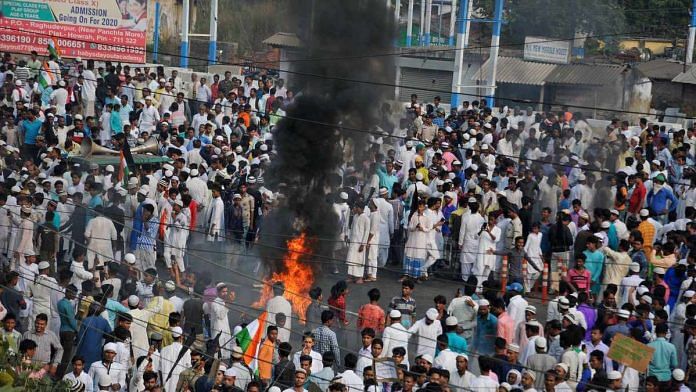Hong Kong: The violent protests and political upheaval that marked 2019 and challenged governments from Hong Kong to Chile is set to stay and is now the “new normal,” according to a global risk firm.
Verisk Maplecroft, which advises corporate clients on political risk around the world, said in a new report released Thursday that it predicts “continued turmoil in 2020” as administrations around the world continue to be surprised by demonstrators and ill-prepared to address the underlying social grievances that spur them.
“We all need to buckle up for 2020,” said Miha Hribernik, the Singapore-based head of Asia risk insight for Verisk Maplecroft. “The rage that caught many governments off-guard last year isn’t going anywhere and we’d all better adapt.”
Many governments were caught by surprise by the scale and ferocity of the protests and ended up attempting to crackdown on the movements, deploying what human rights group have said were arbitrary arrests and indiscriminate violence. That response has ended up further radicalizing protesters and provoking more violent demonstrations, Verisk Maplecroft said in its Political Risk Outlook 2020.
Rising Unrest
Of the countries seeing significantly more angry protests than usual, some of the steepest increases on firm’s unrest index were in Chile and Hong Kong. Chile rose from 91st place to 6th on the index as simmering social strife transformed Latin America’s richest and most stable nation into a focal point of chaotic protests that caused some $2 billion of property damages and killed more than two dozen people.
Hong Kong similarly rose from 117th to 26th after seven months of pro-democracy street protests, the firm said. Although prompted by a since-withdrawn bill that would have allowed extraditions to mainland China, Verisk Maplecroft added that the “root cause of discontent has been the rollback of civil and political rights since 1997.”
India and Iraq, which have both seen determined protests recently, ranked much lower on the list of worsening hot spots because they began last year with heightened levels of unrest. In New Delhi, Prime Minister Narendra Modi now faces the most significant challenge to his rule since being first being elected in 2014, as protesters take to the streets criticizing his Hindu nationalist Bharatiya Janata Party for its anti-Muslim policies.
Many governments have “reacted with a combination of repression and limited concessions” which achieved little because resilient protest movements have adapted rapidly to police tactics, Hribernik said.
“During 2019, governments worldwide scrambled to find an effective response to protests,” he said. “We don’t see much changing during 2020, and January has so far borne this out — protesters have continued to turn out in their thousands in Iran, Iraq, India, Chile, Hong Kong and Lebanon — to name just a few places.” – Bloomberg
Also read: How India has become an economy facing stagflation from one that was a world-beater






